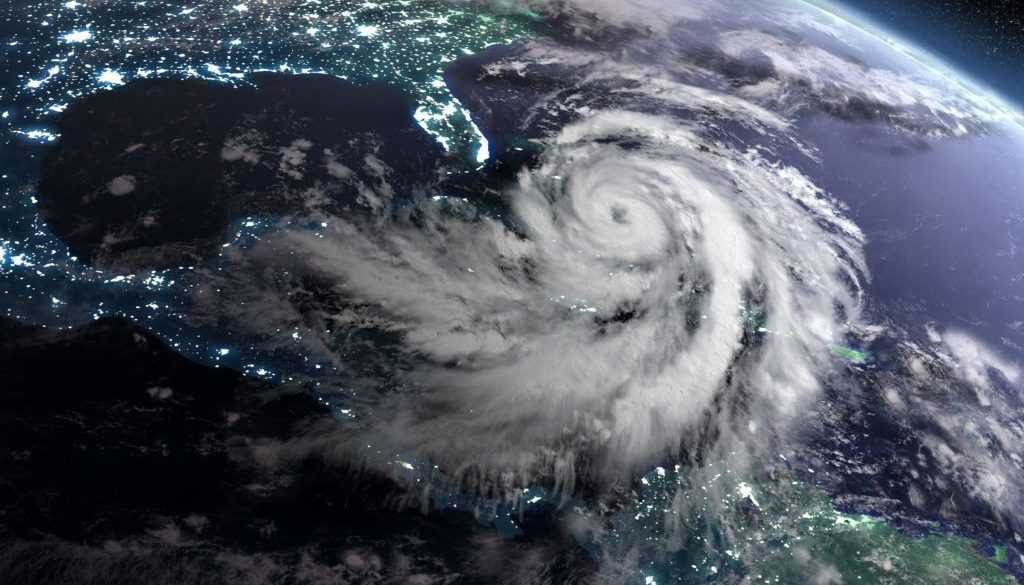La préparation aux catastrophes sauve des vies pendant les ouragans
Mass Communication Software Saves Lives in the Wake of Hurricanes
Hurricanes are responsible for the most severe weather-related damages in the U.S. They are the most expensive natural disasters for the county, totaling $927.5 billion in damages since 1980, with an average of $22.1 billion per year. From 2016 to 2018, the U.S. felt the impact of six hurricanes that racked up $329.9 billion in costs. In Texas alone, a record 104 hurricanes and flooding events have cost billions of dollars in damages.
A hurricane Category 4 or 5 storm can lower production and increase unemployment while disrupting key financial markets. Coastal shorelines account for 40% of jobs in the U.S. and produce nearly half of gross domestic product.
The frequency in which our country faces such disastrous storms has a devastating impact on communities, economies, and overall well-being. In the last 30 years, hurricanes have been responsible for 6,487 deaths, including 3,318 in 2016 to 2018 when the nation was rocked by hurricanes Matthew, Harvey, Irma, Maria, Florence, and Michael. Mass communication during natural disasters is critical.
Though frightening, local governments and first responders have advanced notice of hurricanes — there are 36 hours of warning for the expected onset of winds and flooding. There is time to plan and mobilize each community for the expected level of danger and damage.
Mass Communication during Natural Disasters is Critical
Mass communication systems and collaboration platforms ensure that the entire community is prepared and knows what actions to take for their safety and protection for the entire lifecycle of the storm.
Having the best tools and an airtight communication strategy ensures all emergency response personnel can be ready when disaster strikes. Local government officials can inform and comfort residents as updates unfold, while 9-1-1 teams and first responders have a better idea of what is happening.
A mass notification system tied to the National Weather Service can automatically send customized alerts based on the weather in the area, including levels of severity.
Collaboration Can Save Lives
Getting key stakeholders together is the first and most crucial step in planning severe weather events. Even with early warning, weather patterns can change on a dime, and decisions need to be executed quickly.
Call lists and dial-ins can be time-consuming for the necessary personnel, wasting precious time during disaster. A mass notification system that provides a one-click conference bridge gets decision-makers in touch faster than ever, executing crucial decisions as soon as possible.
Telecommunicators receive nearly 240 million calls every year, with mobile calls making up 80% of that total. According to the National Emergency Management Association (NEMA), 9-1-1 operators must answer calls within 10 seconds during peak time.
They need to collect relevant information such as incident type and accurate details and descriptions of people and places. However, getting location information can be tricky when calling from a mobile phone.
A mass communication system can directly integrate with 9-1-1 centers’ workflow to give telecommunicators accurate location information through Smart911 personal safety profiles. The Federal Communications Commission (FCC) estimates that just one-minute improvements in response times can save nearly 10,000 lives.
How Rave Mobile Safety Can Help
K-12 Schools
Prepare schools with two-way communication tools that keep parents informed and prepare all faculty and staff for changes due to hurricane-related emergencies.
Hospitals
With mass notifications systems, large hospitals and other healthcare facilities can better understand what is needed to manage operations during significant storms and mitigate harm for both patients and hospital staff.
State or Local Community
Rave Mobile Safety’s systems allow individuals to upload critical information such as medical records and personal information like addresses and emergency contacts.
Corporate
Employees can communicate with each other through a mobile safety app, allowing alerts for dangerous weather conditions, crucial action plans, and the ability to check in on one another to see if assistance is needed.
Higher Education
University officials can inform their campuses of upcoming hurricanes and weather forecasts with clear, accurate information and real-time resources.
What to Do After a Hurricane
Just because the hurricane has passed does not mean the danger is cleared. Hurricanes can have devastating impacts on people and property.
This natural disaster is more likely to cause disruptions than others. Severe flooding and power lines and cell phone towers become damaged, cutting off power and communications.
Getting key stakeholders involved to execute better after-emergency planning can improve residents’ safety faster.
Preset notifications to on-site staff and safety personnel, along with details about evacuation routes, give first responders an increased level of situational awareness. GPS tracking systems allow check-ins for those in need with a simple poll question. If there is no response, the software reports those names in the database, informing emergency responders.
What is accomplished during an emergency will determine the complexity of the response and the success of emergency response efforts.
A tactical incident collaboration tool allows the necessary personnel to understand their role in disaster management. The tool integrates with the mass notification platform, establishing clear roles and responsibilities and encouraging communications across departments and agencies.
Evaluating your disaster and emergency communication efforts regularly will help better prepare your community for hurricanes and the damages that come with them.
To learn how to incorporate severe weather disaster preparation into your community through the Rave Platform, do not hesitate to request a demo, or contact the Rave team. 




